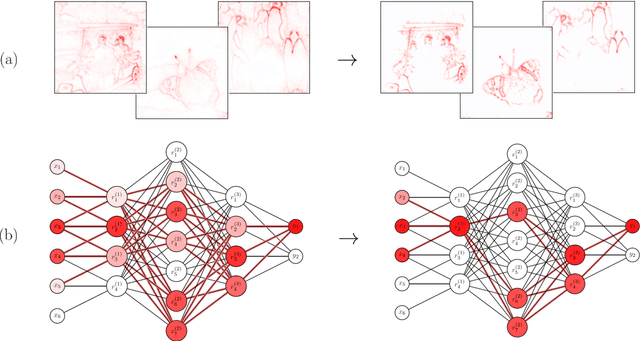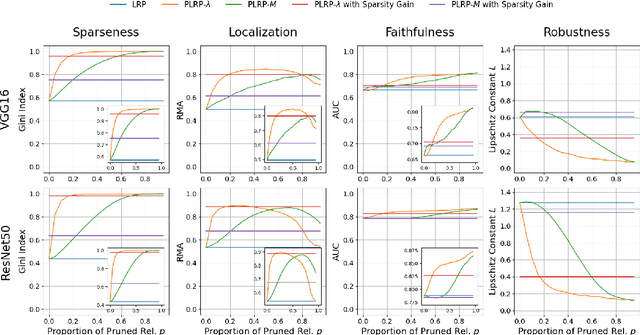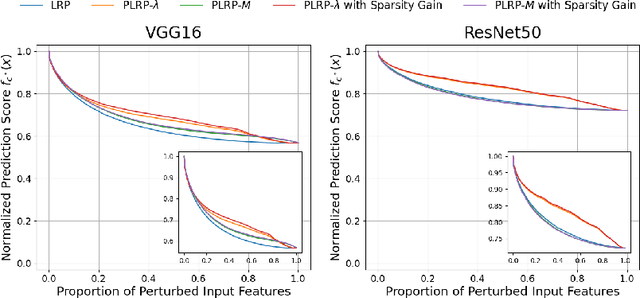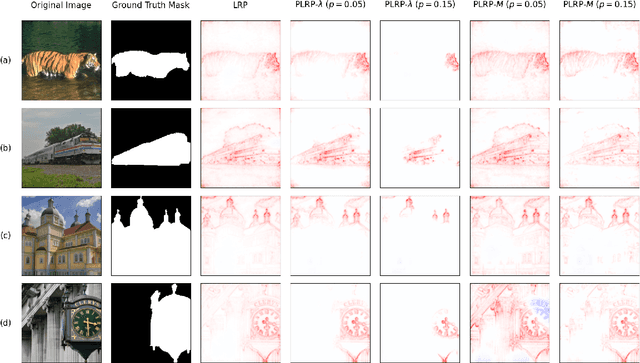Nadja Klein
Streamlining the Development of Active Learning Methods in Real-World Object Detection
Aug 27, 2025Abstract:Active learning (AL) for real-world object detection faces computational and reliability challenges that limit practical deployment. Developing new AL methods requires training multiple detectors across iterations to compare against existing approaches. This creates high costs for autonomous driving datasets where the training of one detector requires up to 282 GPU hours. Additionally, AL method rankings vary substantially across validation sets, compromising reliability in safety-critical transportation systems. We introduce object-based set similarity ($\mathrm{OSS}$), a metric that addresses these challenges. $\mathrm{OSS}$ (1) quantifies AL method effectiveness without requiring detector training by measuring similarity between training sets and target domains using object-level features. This enables the elimination of ineffective AL methods before training. Furthermore, $\mathrm{OSS}$ (2) enables the selection of representative validation sets for robust evaluation. We validate our similarity-based approach on three autonomous driving datasets (KITTI, BDD100K, CODA) using uncertainty-based AL methods as a case study with two detector architectures (EfficientDet, YOLOv3). This work is the first to unify AL training and evaluation strategies in object detection based on object similarity. $\mathrm{OSS}$ is detector-agnostic, requires only labeled object crops, and integrates with existing AL pipelines. This provides a practical framework for deploying AL in real-world applications where computational efficiency and evaluation reliability are critical. Code is available at https://mos-ks.github.io/publications/.
Generative AI for Autonomous Driving: A Review
May 21, 2025Abstract:Generative AI (GenAI) is rapidly advancing the field of Autonomous Driving (AD), extending beyond traditional applications in text, image, and video generation. We explore how generative models can enhance automotive tasks, such as static map creation, dynamic scenario generation, trajectory forecasting, and vehicle motion planning. By examining multiple generative approaches ranging from Variational Autoencoder (VAEs) over Generative Adversarial Networks (GANs) and Invertible Neural Networks (INNs) to Generative Transformers (GTs) and Diffusion Models (DMs), we highlight and compare their capabilities and limitations for AD-specific applications. Additionally, we discuss hybrid methods integrating conventional techniques with generative approaches, and emphasize their improved adaptability and robustness. We also identify relevant datasets and outline open research questions to guide future developments in GenAI. Finally, we discuss three core challenges: safety, interpretability, and realtime capabilities, and present recommendations for image generation, dynamic scenario generation, and planning.
Closing the Loop: Motion Prediction Models beyond Open-Loop Benchmarks
May 08, 2025Abstract:Fueled by motion prediction competitions and benchmarks, recent years have seen the emergence of increasingly large learning based prediction models, many with millions of parameters, focused on improving open-loop prediction accuracy by mere centimeters. However, these benchmarks fail to assess whether such improvements translate to better performance when integrated into an autonomous driving stack. In this work, we systematically evaluate the interplay between state-of-the-art motion predictors and motion planners. Our results show that higher open-loop accuracy does not always correlate with better closed-loop driving behavior and that other factors, such as temporal consistency of predictions and planner compatibility, also play a critical role. Furthermore, we investigate downsized variants of these models, and, surprisingly, find that in some cases models with up to 86% fewer parameters yield comparable or even superior closed-loop driving performance. Our code is available at https://github.com/continental/pred2plan.
Uncertainty-Aware Trajectory Prediction via Rule-Regularized Heteroscedastic Deep Classification
Apr 17, 2025



Abstract:Deep learning-based trajectory prediction models have demonstrated promising capabilities in capturing complex interactions. However, their out-of-distribution generalization remains a significant challenge, particularly due to unbalanced data and a lack of enough data and diversity to ensure robustness and calibration. To address this, we propose SHIFT (Spectral Heteroscedastic Informed Forecasting for Trajectories), a novel framework that uniquely combines well-calibrated uncertainty modeling with informative priors derived through automated rule extraction. SHIFT reformulates trajectory prediction as a classification task and employs heteroscedastic spectral-normalized Gaussian processes to effectively disentangle epistemic and aleatoric uncertainties. We learn informative priors from training labels, which are automatically generated from natural language driving rules, such as stop rules and drivability constraints, using a retrieval-augmented generation framework powered by a large language model. Extensive evaluations over the nuScenes dataset, including challenging low-data and cross-location scenarios, demonstrate that SHIFT outperforms state-of-the-art methods, achieving substantial gains in uncertainty calibration and displacement metrics. In particular, our model excels in complex scenarios, such as intersections, where uncertainty is inherently higher. Project page: https://kumarmanas.github.io/SHIFT/.
* 17 Pages, 9 figures. Accepted to Robotics: Science and Systems(RSS), 2025
Beware of "Explanations" of AI
Apr 09, 2025Abstract:Understanding the decisions made and actions taken by increasingly complex AI system remains a key challenge. This has led to an expanding field of research in explainable artificial intelligence (XAI), highlighting the potential of explanations to enhance trust, support adoption, and meet regulatory standards. However, the question of what constitutes a "good" explanation is dependent on the goals, stakeholders, and context. At a high level, psychological insights such as the concept of mental model alignment can offer guidance, but success in practice is challenging due to social and technical factors. As a result of this ill-defined nature of the problem, explanations can be of poor quality (e.g. unfaithful, irrelevant, or incoherent), potentially leading to substantial risks. Instead of fostering trust and safety, poorly designed explanations can actually cause harm, including wrong decisions, privacy violations, manipulation, and even reduced AI adoption. Therefore, we caution stakeholders to beware of explanations of AI: while they can be vital, they are not automatically a remedy for transparency or responsible AI adoption, and their misuse or limitations can exacerbate harm. Attention to these caveats can help guide future research to improve the quality and impact of AI explanations.
Building Blocks for Robust and Effective Semi-Supervised Real-World Object Detection
Mar 24, 2025Abstract:Semi-supervised object detection (SSOD) based on pseudo-labeling significantly reduces dependence on large labeled datasets by effectively leveraging both labeled and unlabeled data. However, real-world applications of SSOD often face critical challenges, including class imbalance, label noise, and labeling errors. We present an in-depth analysis of SSOD under real-world conditions, uncovering causes of suboptimal pseudo-labeling and key trade-offs between label quality and quantity. Based on our findings, we propose four building blocks that can be seamlessly integrated into an SSOD framework. Rare Class Collage (RCC): a data augmentation method that enhances the representation of rare classes by creating collages of rare objects. Rare Class Focus (RCF): a stratified batch sampling strategy that ensures a more balanced representation of all classes during training. Ground Truth Label Correction (GLC): a label refinement method that identifies and corrects false, missing, and noisy ground truth labels by leveraging the consistency of teacher model predictions. Pseudo-Label Selection (PLS): a selection method for removing low-quality pseudo-labeled images, guided by a novel metric estimating the missing detection rate while accounting for class rarity. We validate our methods through comprehensive experiments on autonomous driving datasets, resulting in up to 6% increase in SSOD performance. Overall, our investigation and novel, data-centric, and broadly applicable building blocks enable robust and effective SSOD in complex, real-world scenarios. Code is available at https://mos-ks.github.io/publications.
* Accepted to Transactions on Machine Learning Research (TMLR). OpenReview: https://openreview.net/forum?id=vRYt8QLKqK
WeedsGalore: A Multispectral and Multitemporal UAV-based Dataset for Crop and Weed Segmentation in Agricultural Maize Fields
Feb 18, 2025



Abstract:Weeds are one of the major reasons for crop yield loss but current weeding practices fail to manage weeds in an efficient and targeted manner. Effective weed management is especially important for crops with high worldwide production such as maize, to maximize crop yield for meeting increasing global demands. Advances in near-sensing and computer vision enable the development of new tools for weed management. Specifically, state-of-the-art segmentation models, coupled with novel sensing technologies, can facilitate timely and accurate weeding and monitoring systems. However, learning-based approaches require annotated data and show a lack of generalization to aerial imaging for different crops. We present a novel dataset for semantic and instance segmentation of crops and weeds in agricultural maize fields. The multispectral UAV-based dataset contains images with RGB, red-edge, and near-infrared bands, a large number of plant instances, dense annotations for maize and four weed classes, and is multitemporal. We provide extensive baseline results for both tasks, including probabilistic methods to quantify prediction uncertainty, improve model calibration, and demonstrate the approach's applicability to out-of-distribution data. The results show the effectiveness of the two additional bands compared to RGB only, and better performance in our target domain than models trained on existing datasets. We hope our dataset advances research on methods and operational systems for fine-grained weed identification, enhancing the robustness and applicability of UAV-based weed management. The dataset and code are available at https://github.com/GFZ/weedsgalore
Investigating Calibration and Corruption Robustness of Post-hoc Pruned Perception CNNs: An Image Classification Benchmark Study
May 31, 2024Abstract:Convolutional Neural Networks (CNNs) have achieved state-of-the-art performance in many computer vision tasks. However, high computational and storage demands hinder their deployment into resource-constrained environments, such as embedded devices. Model pruning helps to meet these restrictions by reducing the model size, while maintaining superior performance. Meanwhile, safety-critical applications pose more than just resource and performance constraints. In particular, predictions must not be overly confident, i.e., provide properly calibrated uncertainty estimations (proper uncertainty calibration), and CNNs must be robust against corruptions like naturally occurring input perturbations (natural corruption robustness). This work investigates the important trade-off between uncertainty calibration, natural corruption robustness, and performance for current state-of-research post-hoc CNN pruning techniques in the context of image classification tasks. Our study reveals that post-hoc pruning substantially improves the model's uncertainty calibration, performance, and natural corruption robustness, sparking hope for safe and robust embedded CNNs.Furthermore, uncertainty calibration and natural corruption robustness are not mutually exclusive targets under pruning, as evidenced by the improved safety aspects obtained by post-hoc unstructured pruning with increasing compression.
Cost-Sensitive Uncertainty-Based Failure Recognition for Object Detection
Apr 26, 2024



Abstract:Object detectors in real-world applications often fail to detect objects due to varying factors such as weather conditions and noisy input. Therefore, a process that mitigates false detections is crucial for both safety and accuracy. While uncertainty-based thresholding shows promise, previous works demonstrate an imperfect correlation between uncertainty and detection errors. This hinders ideal thresholding, prompting us to further investigate the correlation and associated cost with different types of uncertainty. We therefore propose a cost-sensitive framework for object detection tailored to user-defined budgets on the two types of errors, missing and false detections. We derive minimum thresholding requirements to prevent performance degradation and define metrics to assess the applicability of uncertainty for failure recognition. Furthermore, we automate and optimize the thresholding process to maximize the failure recognition rate w.r.t. the specified budget. Evaluation on three autonomous driving datasets demonstrates that our approach significantly enhances safety, particularly in challenging scenarios. Leveraging localization aleatoric uncertainty and softmax-based entropy only, our method boosts the failure recognition rate by 36-60\% compared to conventional approaches. Code is available at https://mos-ks.github.io/publications.
Sparse Explanations of Neural Networks Using Pruned Layer-Wise Relevance Propagation
Apr 22, 2024



Abstract:Explainability is a key component in many applications involving deep neural networks (DNNs). However, current explanation methods for DNNs commonly leave it to the human observer to distinguish relevant explanations from spurious noise. This is not feasible anymore when going from easily human-accessible data such as images to more complex data such as genome sequences. To facilitate the accessibility of DNN outputs from such complex data and to increase explainability, we present a modification of the widely used explanation method layer-wise relevance propagation. Our approach enforces sparsity directly by pruning the relevance propagation for the different layers. Thereby, we achieve sparser relevance attributions for the input features as well as for the intermediate layers. As the relevance propagation is input-specific, we aim to prune the relevance propagation rather than the underlying model architecture. This allows to prune different neurons for different inputs and hence, might be more appropriate to the local nature of explanation methods. To demonstrate the efficacy of our method, we evaluate it on two types of data, images and genomic sequences. We show that our modification indeed leads to noise reduction and concentrates relevance on the most important features compared to the baseline.
 Add to Chrome
Add to Chrome Add to Firefox
Add to Firefox Add to Edge
Add to Edge